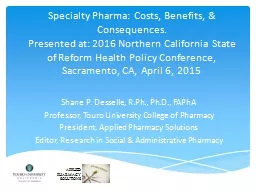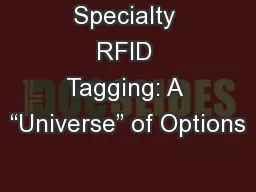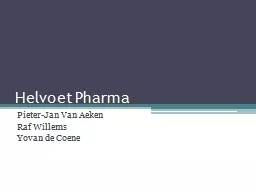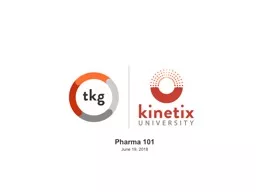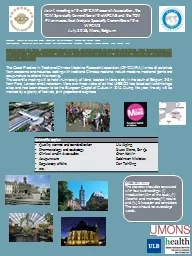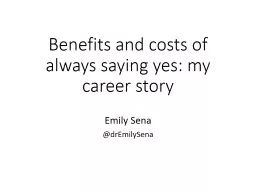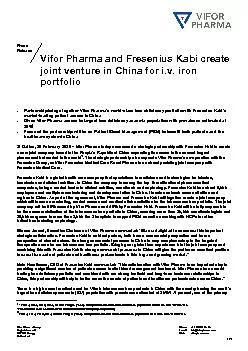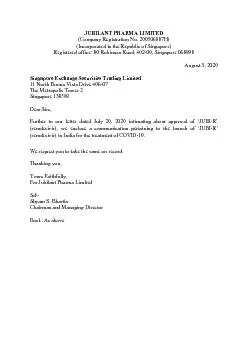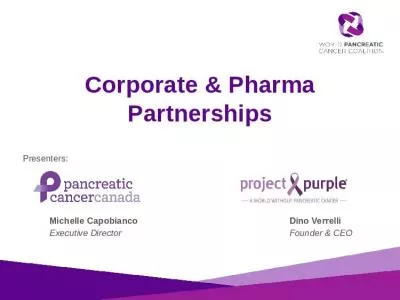PPT-Specialty Pharma: Costs, Benefits,
Author : pamella-moone | Published Date : 2018-12-09
amp Consequences Presented at 2016 Northern California State of Reform Health Policy Conference Sacramento CA April 6 2015 Shane P Desselle RPh PhD FAPhA Professor
Presentation Embed Code
Download Presentation
Download Presentation The PPT/PDF document "Specialty Pharma: Costs, Benefits," is the property of its rightful owner. Permission is granted to download and print the materials on this website for personal, non-commercial use only, and to display it on your personal computer provided you do not modify the materials and that you retain all copyright notices contained in the materials. By downloading content from our website, you accept the terms of this agreement.
Specialty Pharma: Costs, Benefits,: Transcript
Download Rules Of Document
"Specialty Pharma: Costs, Benefits,"The content belongs to its owner. You may download and print it for personal use, without modification, and keep all copyright notices. By downloading, you agree to these terms.
Related Documents

